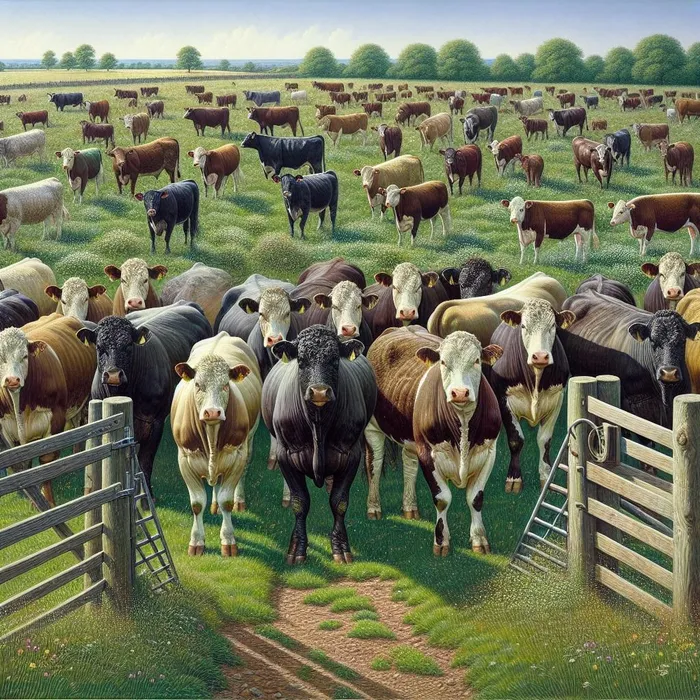Addressing SA’s foot-and-mouth disease: The need for strategic vaccination and traceability

Meat and dairy farmers have been suffering economic setbacks for months due to the restrictions on the movement of livestock.
Image: IOL/ RON AI
The solution to ridding South Africa of foot-and-mouth disease (FMD) lies in traceability, strategic vaccination, domestic production and accurate scientific information.
The Department of Agriculture said there were FMD outbreaks in KwaZulu-Natal, which have spread to Mpumalanga and Gauteng. One farm in Mpumalanga was identified as part of trace-forward exercises from a positive auction in Utrecht, KZN, while another farm was reported in Gauteng.
That was according to the Freedom Front Plus MP and chief spokesperson on agriculture, Dr Wynand Boshoff, who said meat and dairy farmers have been suffering economic setbacks for months due to the restrictions on the movement of livestock in parts of northern KZN and the Eastern Cape.
“The problem is the requirement that milk from animals in affected areas must be double-pasteurised. Cattle in the affected areas may also not be sold at all,” Boshoff said.
“Commercial and subsistence farmers in the affected parts of KwaZulu-Natal have been unable to sell any livestock since February this year. This has led to the illegal transport of animals and subsequent contamination in other provinces.”
Boshoff said South Africa was once FMD-free due to careful, nationwide vaccinations. However, over the past decades, state veterinary services and Onderstepoort Biological Products, which manufactured the vaccine, declined significantly.
“The most pressing issue is that the strict measures imposed by the Department of Agriculture are not based on science. While foot-and-mouth disease is deadly and catastrophic for the entire agricultural ecosystem in the Northern Hemisphere, this is not the case in South Africa,” Boshoff said.
He said that in a written response in Parliament, Agriculture Minister John Steenhuisen confirmed that no cattle died in the latest outbreak and that the disease has not been detected in sheep or goats. Yet the imposed restrictions apply to all cloven-hoofed animals.
“The problem is exacerbated by the high cost of vaccines that are being imported from Botswana, even though South African facilities can produce them at much lower costs. Accreditation remains the major hurdle for these laboratories,” Boshoff said.
He said that at current prices, it would cost approximately R5.4 billion over three years to eliminate the disease from the country.
“The solution would only be temporary, though, as buffaloes also carry the disease, and cattle move freely between South Africa and neighbouring countries,” Boshoff said.
“The solution lies in traceability, strategic vaccination, domestic production and accurate scientific information.
“Targeted traceability would ensure that restrictions are only imposed on affected farms.”
Meanwhile, during a portfolio committee meeting last week, Department of Agriculture Deputy Director-General Dipepeneneneng Serage said they were going to have to prioritise funding, which they do not have enough of, to procure vaccines and have them shipped into the country.
“Our Agricultural Research Council is able to produce some vaccines but albeit not on a large scale. We’ve started a process of ensuring that we double the capacity at the Agricultural Research Council to produce additional vaccines so that we rely on our own South African-produced vaccine and no longer rely on vaccines from Botswana,” Serage said.
He said some farmer organisations and farmers approached the department and asked it to allow them to purchase vaccines themselves.
“We are going to allow one farm, farmer or farming business this next week or so for them to purchase vaccines directly, but under the supervision of our veterinary services to ensure that they don’t wait on state resources, which are dwindling,” Serage said.
thobeka.ngema@inl.co.za